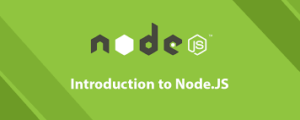Node js has become a cornerstone in modern web development, allowing developers to use JavaScript not only on the client side but also on the server side. If you’re a newcomer to the world of web development, this guide will introduce you to Node js and its essential concepts, empowering you to harness the power of JavaScript for server-side applications.

Understanding Node.js
1. JavaScript Everywhere: Node js enables developers to use JavaScript for server-side scripting, extending the language’s versatility beyond the confines of the browser. This unification of server-side and client-side scripting simplifies development workflows and promotes code reuse.
2. Asynchronous, Non-blocking I/O: One of Node’s defining features is its asynchronous, non-blocking I/O model. Unlike traditional server-side technologies, Node js can handle multiple concurrent connections efficiently, making it ideal for building scalable and responsive applications.
3. Event-Driven Architecture: Node js is built on an event-driven architecture, where certain types of objects (called “emitters”) emit events that trigger designated functions (event listeners). This paradigm facilitates the creation of highly responsive and modular applications.
4. npm (Node Package Manager): npm is the largest ecosystem of open-source libraries in the world. Node js developers leverage npm to easily install, manage, and share packages, saving time and effort in building robust applications.
Setting Up Your Development Environment
1. Installing Node.js: Before diving into Node.js development, ensure you have Node.js installed on your machine. You can download it from the official website: Node.js Downloads.
2. Creating Your First Node.js Application: Let’s create a simple “Hello, Node.js!” application. Create a new file, app.js, and add the following code:
// app.js
const http = require('http');res.writeHead(200, { ‘Content-Type’: ‘text/plain’ });
res.end(‘Hello, Node.js!’);
});
server.listen(PORT, () => {
console.log(`Server running at http://localhost:${PORT}/`);
});
3. Running Your Node.js Application: Open a terminal and run the following command:
node app.js
Visit http://localhost:3000 in your browser to see your first Node.js application in action.
Expanding Your Node.js Knowledge
- Express.js: Express.js is a popular web application framework for Node js, simplifying the process of building robust and scalable web applications. Explore the official documentation: Express.js Documentation.
- Middleware: Understand the concept of middleware in Node js, a crucial component in handling requests and responses. Learn more about middleware: Express.js Middleware.
- npm Packages: Explore the vast npm registry to discover and integrate third-party packages into your Node.js applications: npm Registry.
Conclusion:
Node js opens the door to server-side JavaScript, offering a powerful and efficient environment for building scalable and responsive applications. This guide has equipped you with the foundational knowledge to start your journey into Node.js development. As you delve deeper into this exciting ecosystem, explore advanced topics, frameworks like Express.js, and the rich npm library to unleash the full potential of Node javascript in your web development endeavors. Happy coding!
